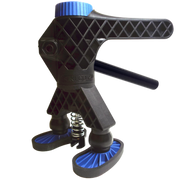
Hail Seasons Across the Globe
Each year, hailstorms lead to property damage across the globe, including large dents and dings on hoods, roof panels, trunks and throughout the bodies of all kinds of vehicles. Although this is bad news for car owners, this damage could help you earn more this year.
Chasing the Profits
While we would all love to be at least a part-time meteorologist, the fact is predicting the weather isn’t something that we are all going to have the talent for and let’s face it do these so-called specialists really get it right every time anyway?
Instead of trying to predict the weather, doing a bit of research and finding the right information could help land you in the right place at the right time. While hailstorms often occur between April and September in the United States and other countries in the Northern Hemisphere, it is most active between September and February for Australia and countries in the Southern Hemisphere.
United States
According to the weather experts at weather.com, hail causes an average of $1.42 billion in property damage in the United States each year. Much of this damage occurs during the spring and summer months as warmth and humidity build, fueling severe thunderstorms. Some of the most frequently reported hail storms in the United States often involve landlocked states in the Great Plains and the Midwest, due to this region’s freezing altitude dipping below 11,000 feet. Of course, those who live in the region known as Hail Alley, which is the region where Nebraska, Colorado, and Wyoming meet, tops the list as the area with the most auto body repair claims due to hail. In fact, nearly 60 percent of all severe weather insurance claims have been attributed to hail.
Severe hail is also been known to occur frequently in an area known as the triangular region from west Texas to northwest Missouri to the western Dakotas. In fact, much of the western areas of these states average the most days with hail larger than golf balls. Some of the largest hail (2” or more) during the summer of 2018 was also been reported in Kansas and Arizona.
Knowing the region and season that hail will strike helps, but PDR and chasing hail requires the knowledge of precisely when and where. In the United States NOAA predicts and tracks weather patterns and events, including hail. iDamage-Pushed is a popular app used by PDR techs to identify the exact time, location and severity within the US.
Across the Globe
Along with the U.S, other parts of the world also receive generous amounts of damage from hailstones, which means added profits for those PDR shops and techs outside the U.S. Insurance companies in large parts of Germany, Italy, and France saw an uptick of automotive insurance claims in 2018 after a large summer hail storm.
Southeastern Austria and northeastern Spain have also been well-known hail storm hot spots since the early 1950s. Japan has even been a target of freak storms that have been known to produce hail similar to that of spike balls. Occurrences like this happen so often that residents came up with the term “guerrilla downpour”. Hailstorms are also a common feature of the climate in New Zealand, Australia and South Africa and many PDR technicians followed storms as late as December of last year.
Similar to NOAA monitoring weather within the United States, most countries have a national service agency responsible for forecasting and storm reporting. There are also many regional and third-party applications, such as Higgins Storm Chasing, that provide more weather information to PDR techs operating from and traveling to Australia and other countries outside of the U.S.
Hitting the road to chase storms and find those in need of PDR services throughout the world is a common strategy for PDR techs. Just make sure that you are prepared with knowledge about the region, weather, laws, as well as the right PDR tools for the job before heading to each destination.






